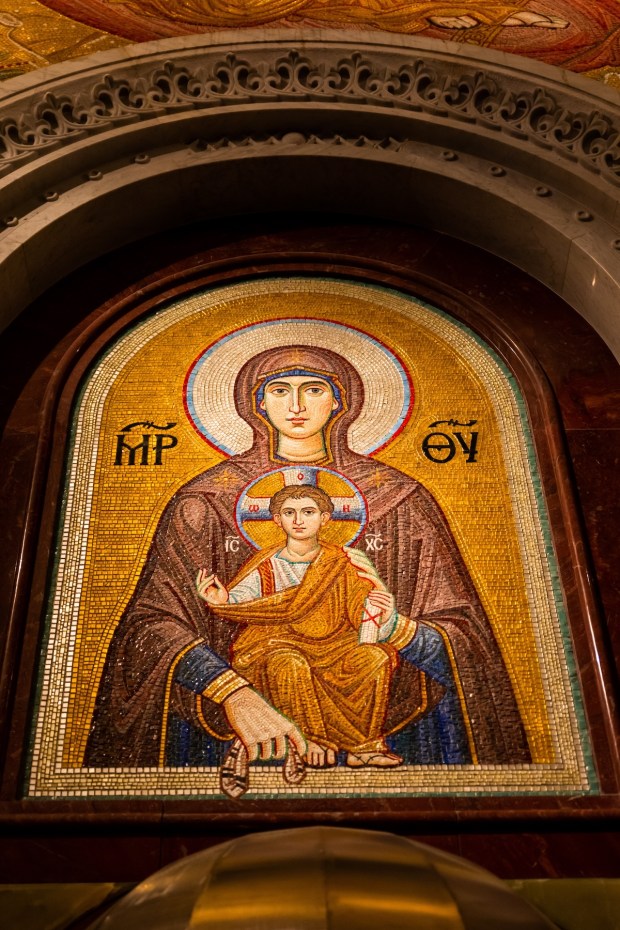Lenten Campaign 2025
This content is free of charge, as are all our articles.
Support us with a donation that is tax-deductible and enable us to continue to reach millions of readers.
In Eastern iconography, letters are integral to the theological narrative of the icon itself. Greek and Russian Orthodox icons often feature letters or abbreviations, in Greek or Church Slavonic, that serve as spiritual signposts and reveal layers of meaning – to those who understand their context.
For those less familiar with these languages or conventions, here is an overview of the most common letters and abbreviations in icons and how to interpret them.
Jesus
One of the most significant inscriptions often seen in Christ icons is IC XC (ΙϹ ΧϹ), which is Greek for Ἰησοῦς Χριστός – Jesus Christ. These are actually abbreviations, a common practice in ancient Greek and Church Slavonic texts, and are often placed on either side of Christ's head.

Along with IC XC, another common inscription is Ὁ ὬΝ (HO ON), which means “the one who is,” referring to God's self-revelation in Exodus as “I AM.” This phrase, often in a halo or above Christ's head, emphasizes Christ’s divine nature as eternal and self-existent – as read in the Creed, “begotten, not made, consubstantial with the Father.”
Mary
Icons depicting the Virgin Mary often have two inscriptions: ΜΡ ΘΥ (Μήτηρ Θεοῦ), the Greek abbreviation for Mother of God. This abbreviation, also in Greek or Church Slavonic, is an explanation of Mary's role in salvation history as the Theotokos, or “God-bearer.”
Sometimes the words Παναγία (Panagia), meaning “All-Holy,” accompany images of Mary, emphasizing her unique purity and role in Christian theology.

Saints
In scenes of saints, angels, or biblical figures, names are often abbreviated or spelled out in full as a mark of honor and identification. For example, St. George may be referred to as ΟἉΓΙΟC ΓΕΩΡΓΙΟC (Hagios Georgios), or simply ΓΓ as an abbreviated form, with “Hagios” meaning “Saint.” This practice allows the viewer to immediately recognize the figures and their spiritual heritage – even across language barriers.
Events
These inscriptions also extend to narrative scenes. In the icon of the Resurrection, the Greek letters Ἡ ἈΝΑΣΤΑΣΙΣ (He Anastasis) are often present, meaning “The Resurrection,” emphasizing the event depicted, rather than just a figure. (See image below, which says The Resurrection of Christ.)
Similarly, in icons of the Nativity or Baptism of Christ, inscriptions label the event – reminding the viewer of the overall sacred mystery being depicted, rather than focusing solely on the people involved in it.

Catechism of the Catholic Church
These letters are essentially shortcuts that anchor the viewer in the divine story that each icon presents. Icons are meant not only to depict but to communicate the mystery of the Incarnation, the Resurrection, and the lives of the saints, and these seemingly simple letters contain key elements that help decipher these theological truths.
By learning to recognize them, the faithful are invited into deeper contemplation, experiencing icons not as static images, but as a revealing shared language.










